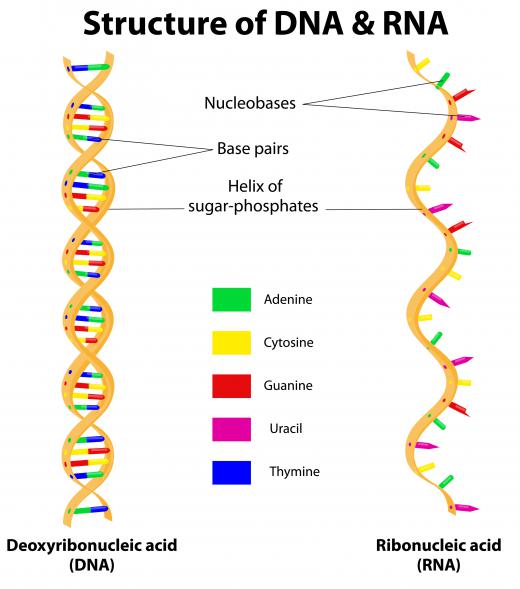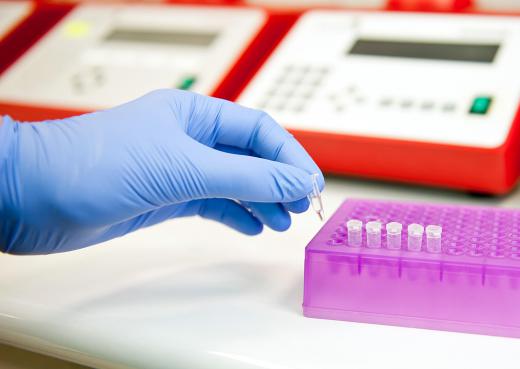What is Electroporation?
 Mary McMahon
Mary McMahon
Electroporation is a process which is designed to make the plasma membrane of a cell temporarily porous so that molecules can pass freely through it. There are a number of applications for this process, ranging from DNA transfection of organisms being studied in the lab to the potential for targeted delivery of medications such as chemotherapy which could be forced directly into cancer cells using electroporation techniques. Several manufacturers of scientific equipment manufacture devices which can be used for electroporation.
In this procedure, an electrical current is introduced to a cell or group of cells. Studies have shown that electroporation can be performed both in vitro and in vivo, on living cells inside and outside the body of a host organism, including on single celled organisms. The electrical current disrupts the plasma membrane of the cells, creating openings where they did not exist before.

If a substance is in solution with the cells, it will pass over the cell membrane after the electric current is introduced. Then, the cells can be allowed to rest and recover. In some cases, up to 80% of the cells may be successfully penetrated with the substance of interest. Once the cells have recovered, they can be cultured and tested to confirm that the electroporation was successful.

There are some disadvantages to electroporation. One problem is that if the amount of electricity is not carefully calculated, cell damage can occur. This is undesirable when the goal is to end up with healthy cells which can be used in research, or when the goal is to introduce something to a cell in an organism without damaging the cell. It is also not possible to control what passes through the cell membrane, which means if there are impurities in the solution or the electroporation does not occur in a controlled environment, that potentially harmful molecules could end up inside the cell.

In the lab, electroporation is used to introduce DNA into cells for the purpose of genetic engineering. Theoretically, the same process could also be used for gene therapy in living organisms. Plasmids, medications, and other types of molecules can also be transferred across the cell membrane with the assistance of electroporation. One advantage to using this technique for in vitro work in the lab is that it is possible to process large numbers of cells at once, cutting down on the amount of time spent processing cells for research.
AS FEATURED ON:
AS FEATURED ON:













Discussion Comments
Actually, electroporation is a very safe and effective means of cell transfection. It works with every cell type, and even in difficult to transfect cells.
It's used in such a wide array of applications including cancer research, vaccine development, biofuels, designer DNA, drug discovery, and gene therapy.
In fact, with BTX electroporation systems, you can transfect directly into tissues with in vivo electrodes. Electroporation is really the gold standard in efficient cell transfection.
@MrMoody - I believe they are doing this. I am concerned about the electricity. The article says that if you use too much electrical current you could end up destroying healthy cells. Maybe this is one way to destroy the tumors; beef up the electrical current.
But would you want to take that risk? The idea of passing current through the body doesn’t really sit well with me, personally.
I think the body itself is electrically charged with its own impulses. Rushing electricity through it seems like a risky proposition. I would only entertain the idea of using an electroporation system with certain types of genetic engineering, like with crops and stuff like that.
I assume that you can do the same thing with crops. Nothing in the article seems to suggest otherwise, from what I can tell.
If it’s possible to use an electroporator to penetrate the cell membrane in this way, then I guess it would be just as possible to use it to destroy tumors.
Perhaps it’s already being used in this way, I don’t know, but it seems to make sense. You would just have to open up the pores of the tumor cells, then inject whatever substance you would need to destroy the cell, from the inside out.
It would be kind of like a sting operation, if you will, to destroy the cancerous cells that make up the tumors.
Post your comments